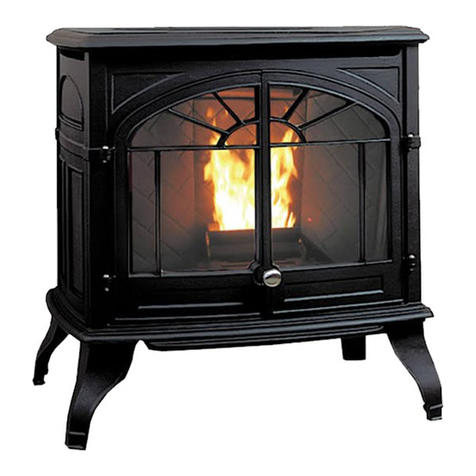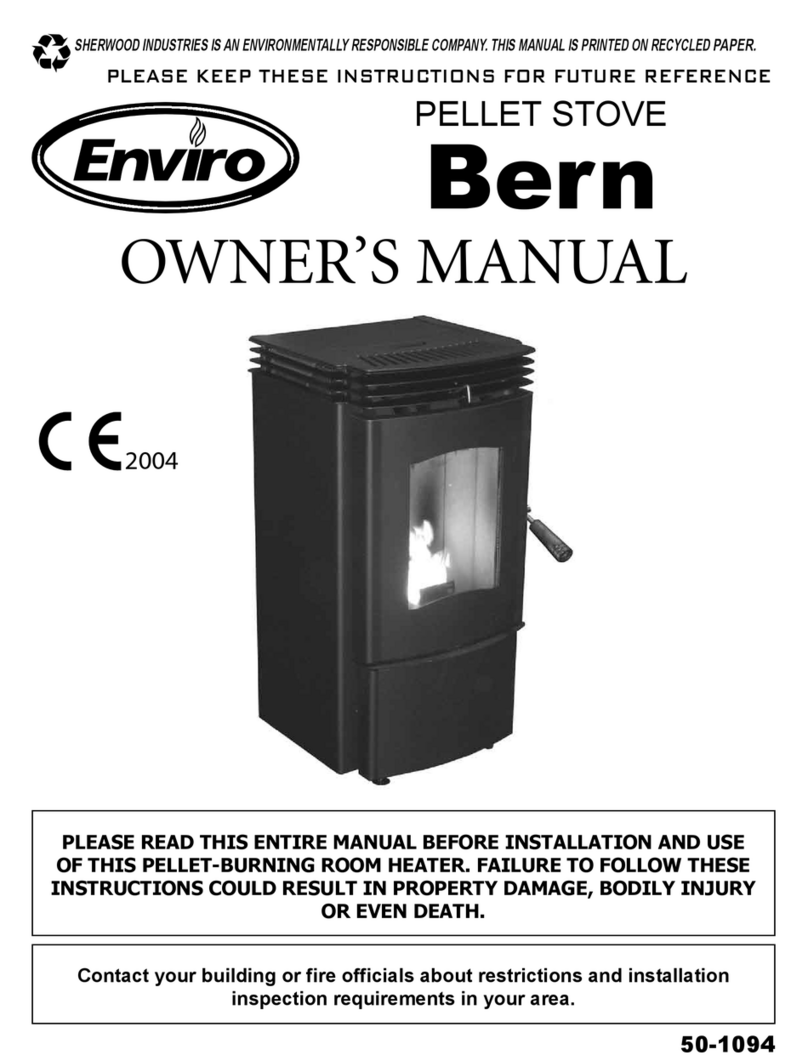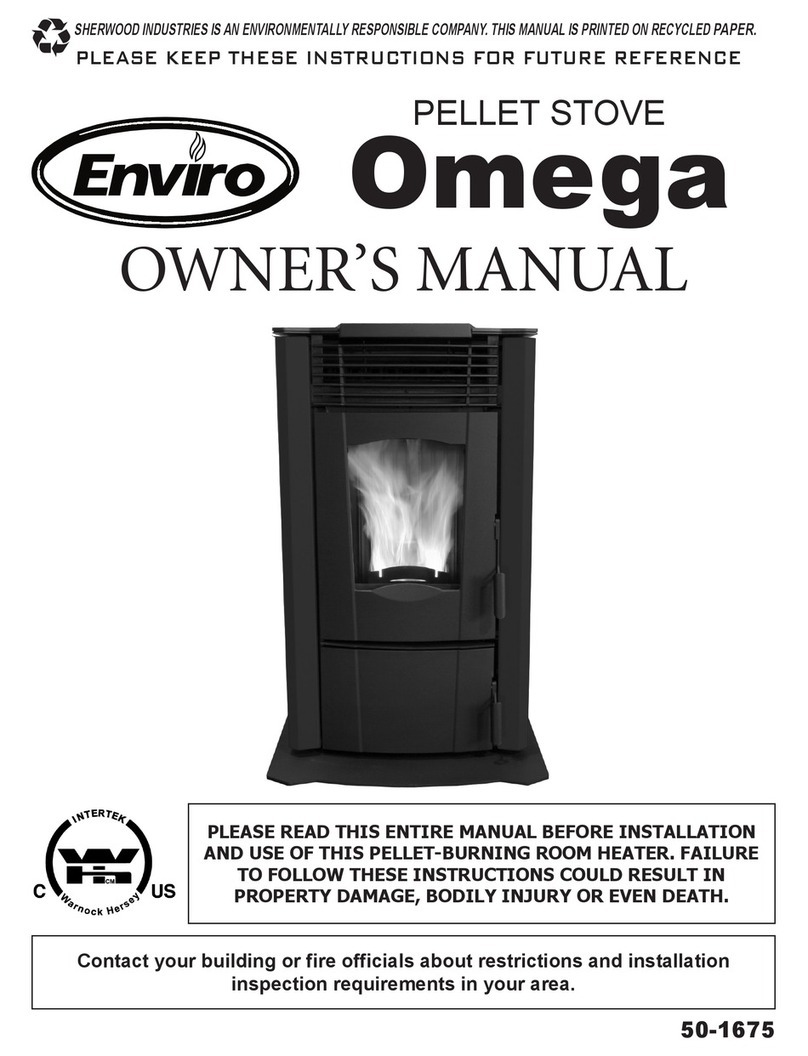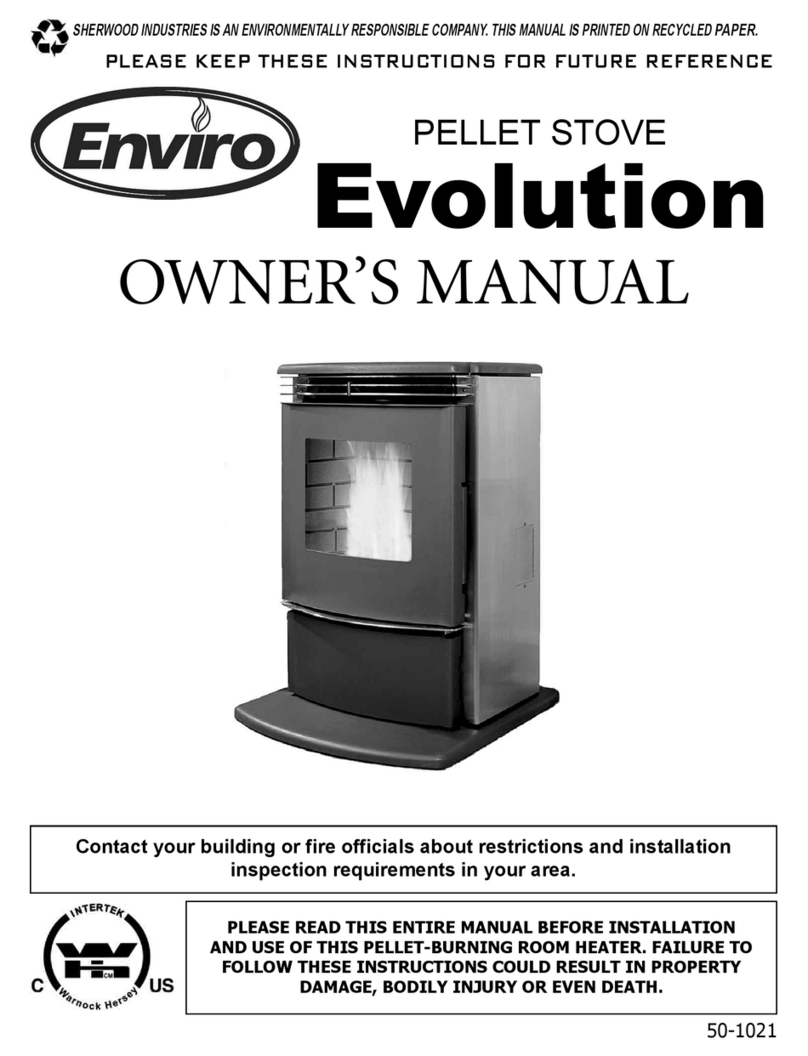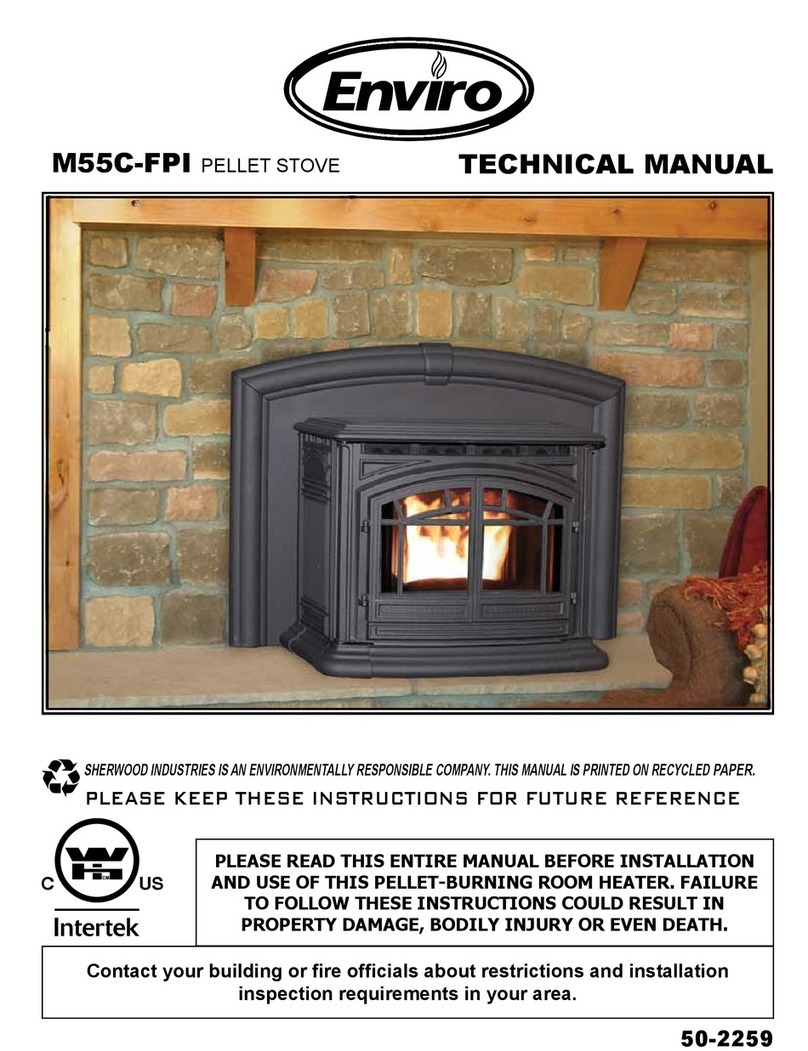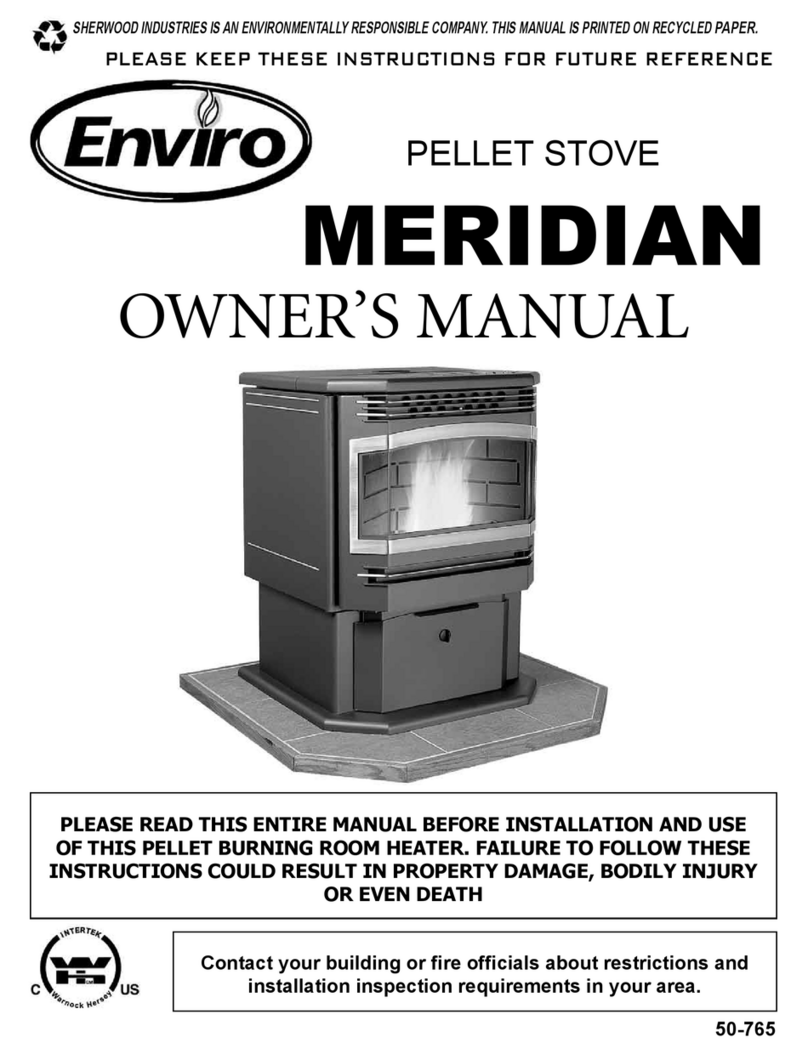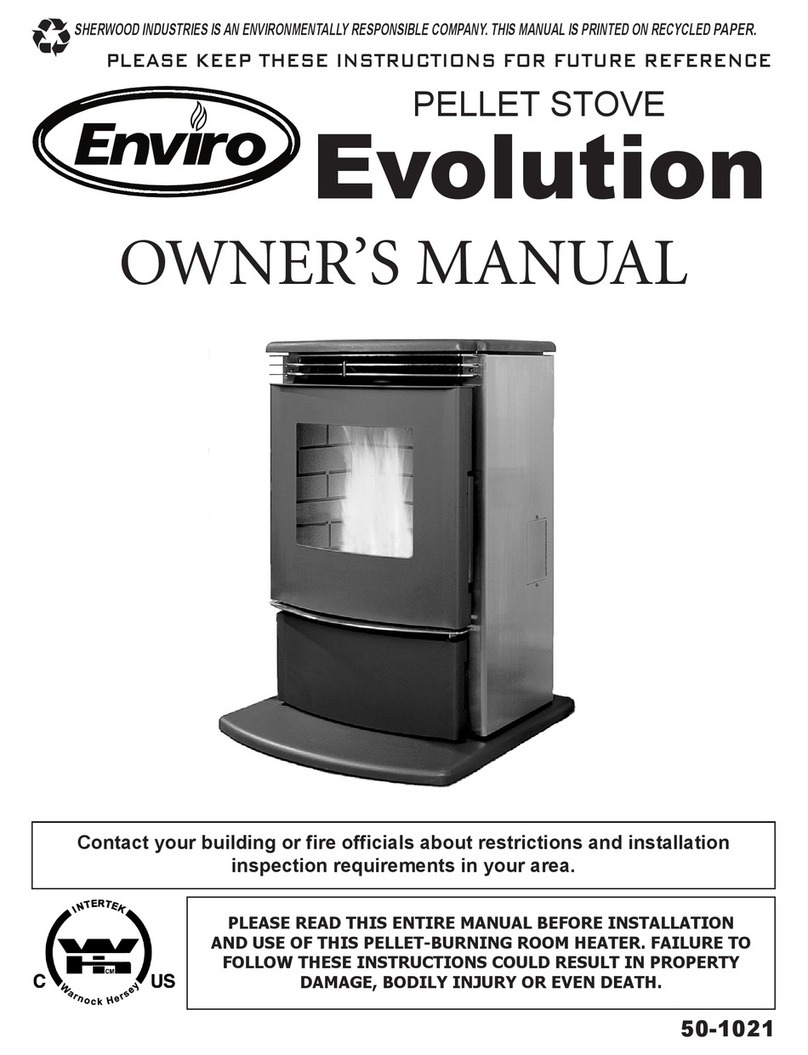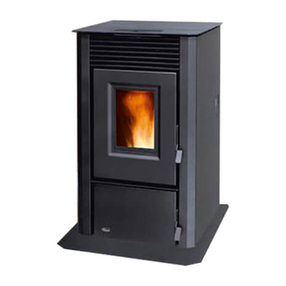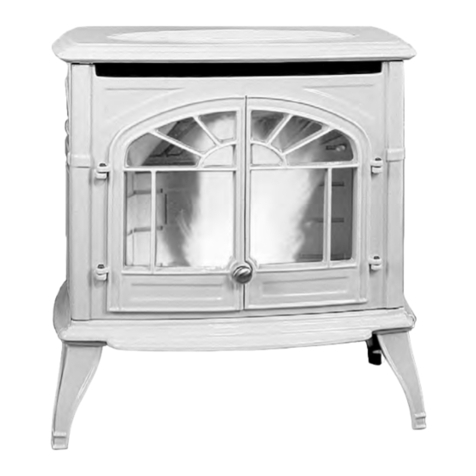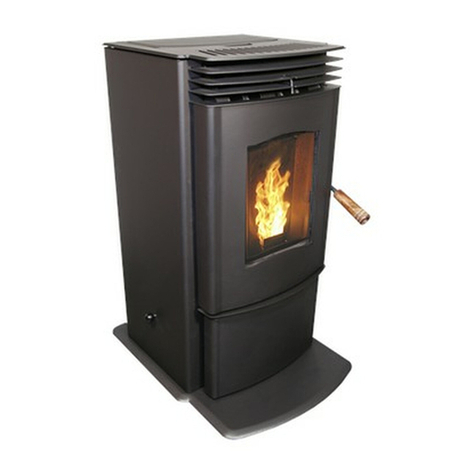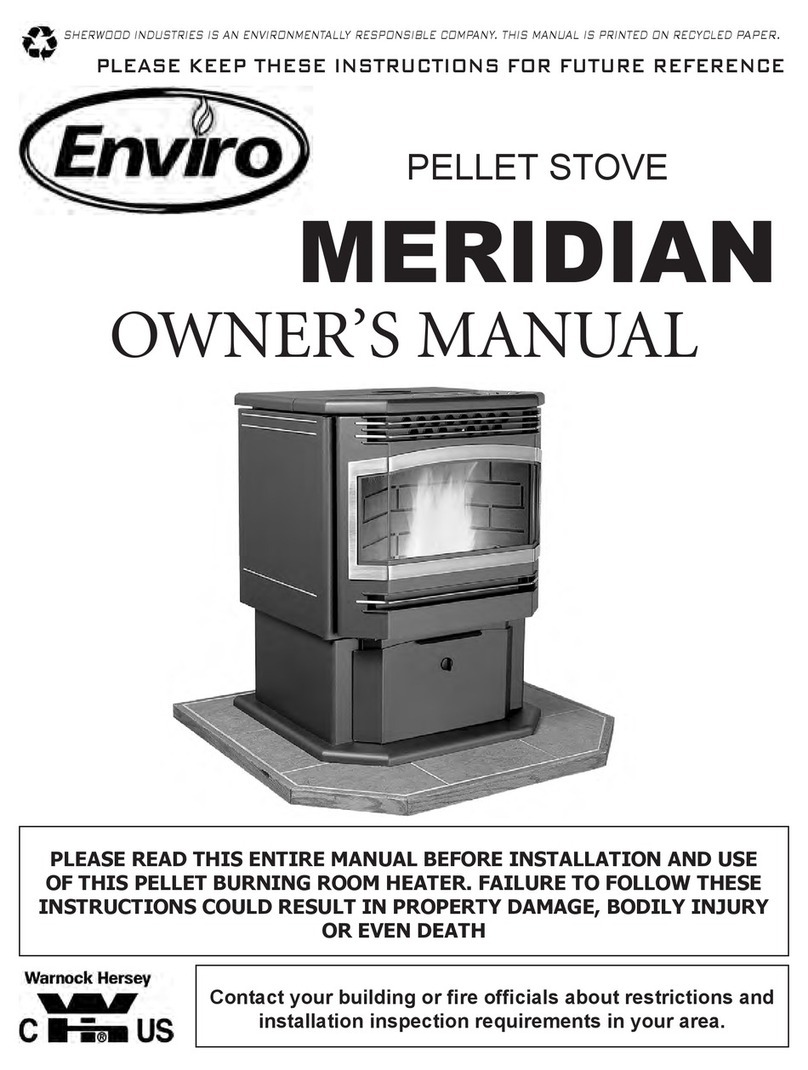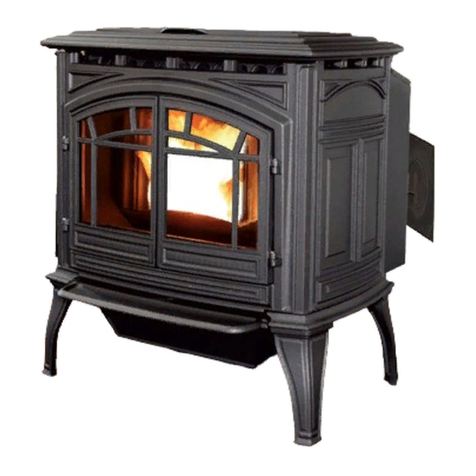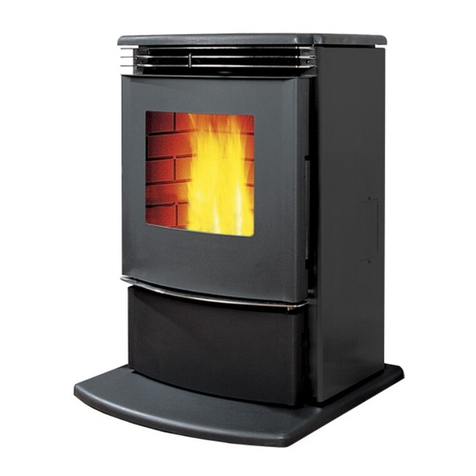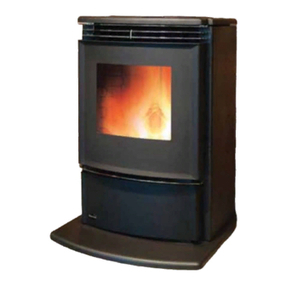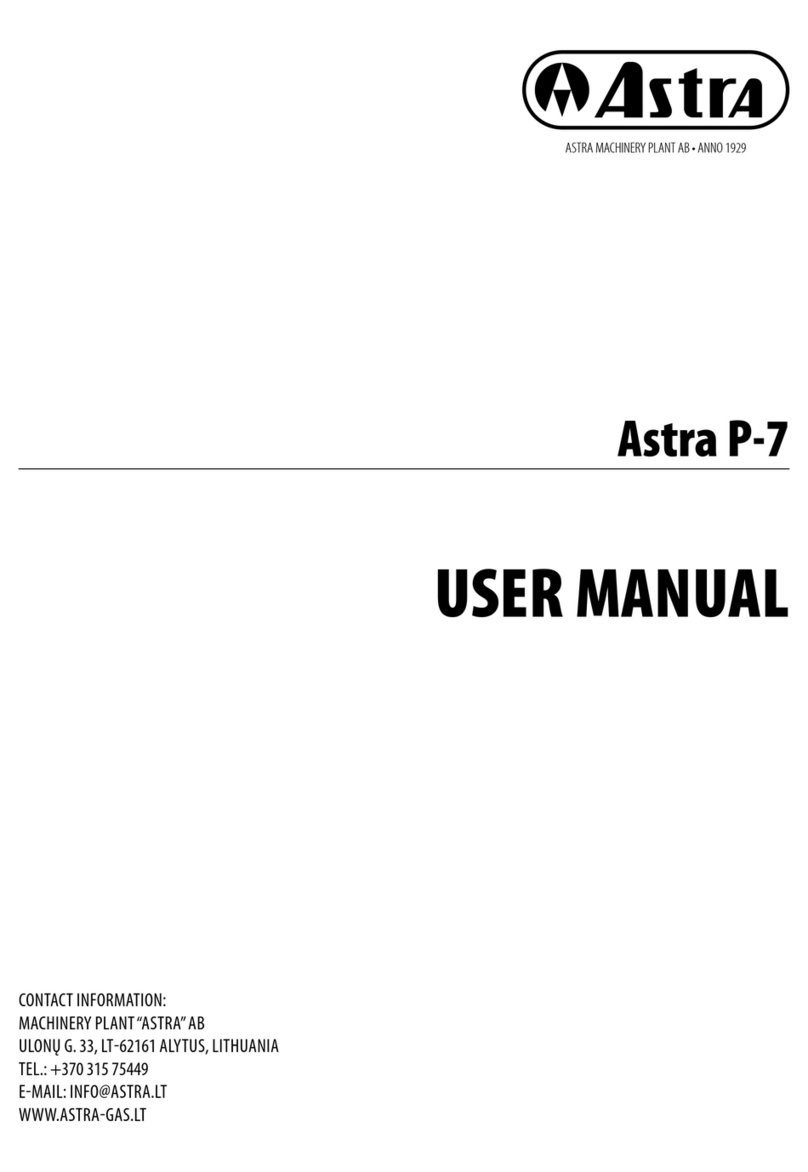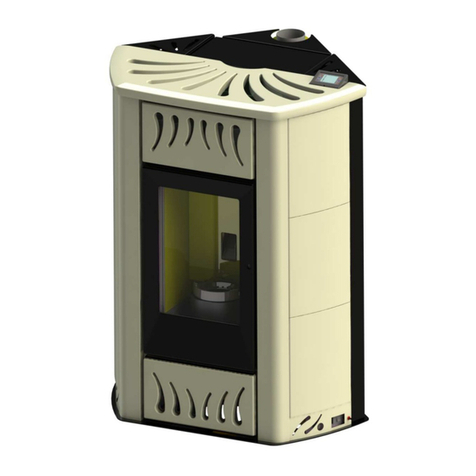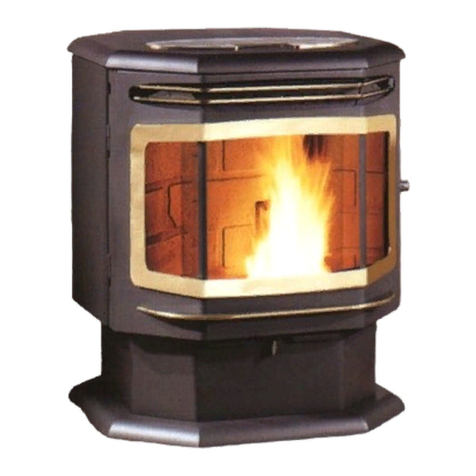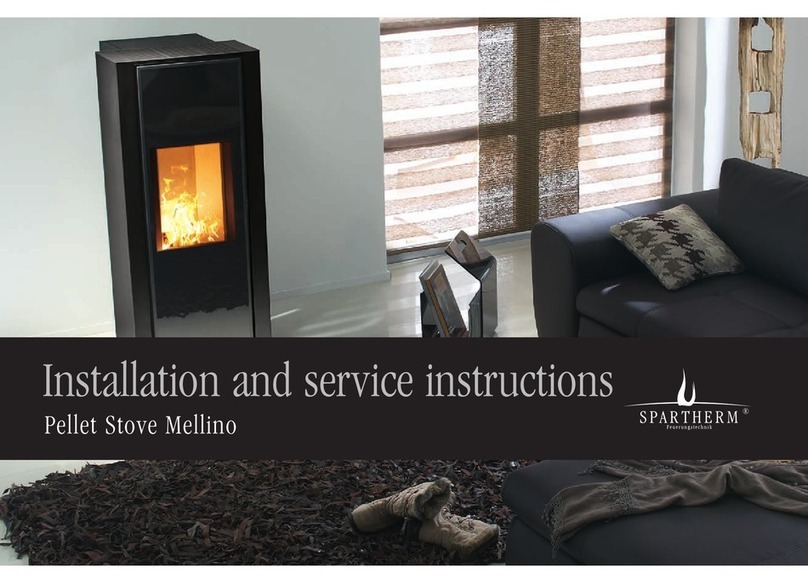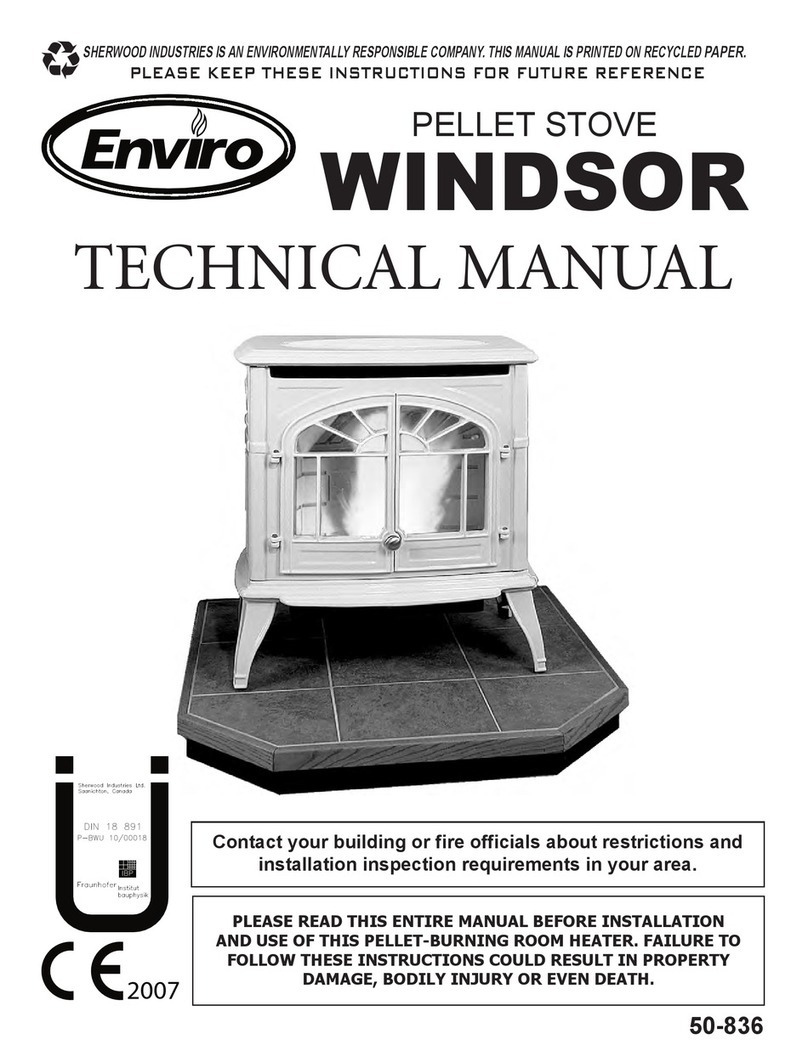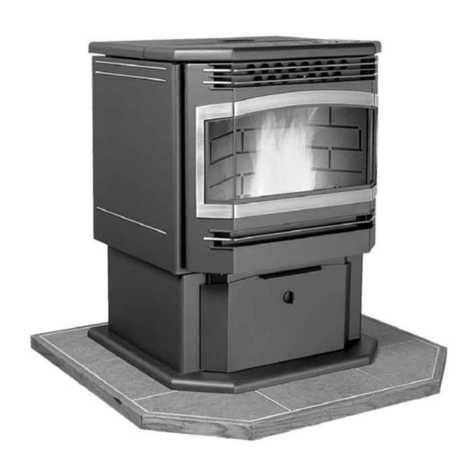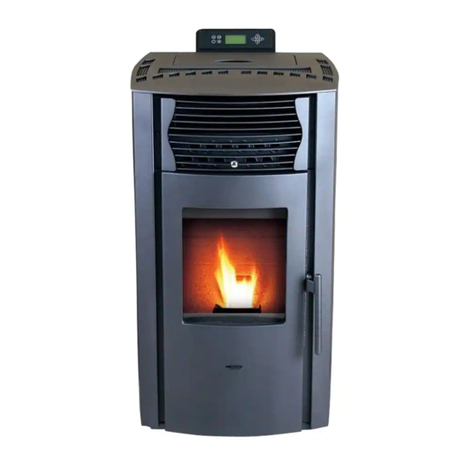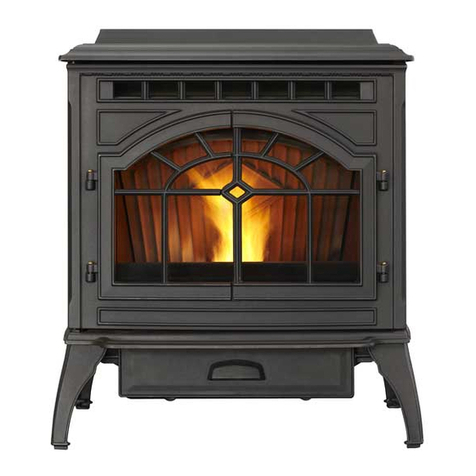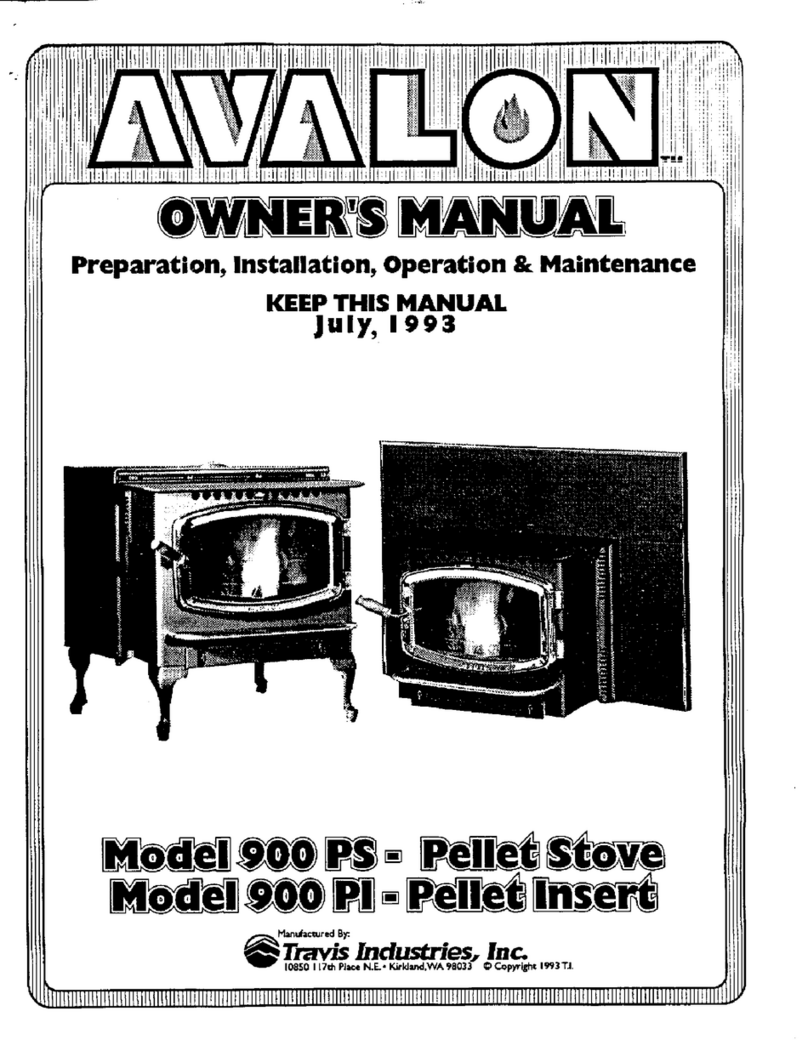
have different ash contents. Ash content is a good indication of fuel efficiency and quality. Refer to “Warnings
and Recommendations” for disposal of ashes.
BLOWER MECHANISMS ( # 2 SEE PAGE 10)
Unplug the stove then open the right/left side panels to access the two blowers. Only the convection blower
motor (on the right side of the stove) will require lubrication. The convection motor has two lubrication holes on it.
Use two drops of SAE 20, light oil to lubricate every six months. Excess oil may damage the motor. The exhaust
blower’s motor has sealed bearings, DO NOT lubricate this motor.
DOOR GLASS
(It is recommended that your dealer replace the glass if broken.)
The door glass is made of high temperature PYROCERAMIC The center panel is 246mm x 383mm and the two
outside pieces are 246mm x 107mm. To replace the glass, unscrew and remove the four glass retainers.
Remove the glass and any broken pieces. High temperature fiberglass tape should be used around the glass.
Replace the glass, then screw the glass retainers back to the frame.
FRESH AIR INTAKE
Inspect periodically to be sure that it is not clogged with any foreign materials.
EXHAUST PASSAGES ( # 3 SEE PAGE 10)
For BI-weekly clean out, ash may be removed from behind the steel plates by rotating the circular covers located
behind the right and left side panels. To open the side panels undo one T20 Torx screw on each side( TOP,
FRONT). When the side cabinet doors have been opened there are two round disks at the bottom of the firebox,
loosen the screw on the disks and open, this will allow vacuuming behind the firebox liners plates.
Removal of the fire box backing for BI-annual cleaning ( # 4 SEE PAGE 10)
-Open the door with the handle provided, Remove the burn pot and burn pot liner.
-Lubricate all screws with penetrating oil.
-Undo the four screws and remove the firebrick liner.
-Remove the two top baffles.
- Just above the ash sill there are two screws that hold the firebox liners in place, remove these two
screws.
-With the tip of a flat screwdriver, gently lift up the side panels and remove the side panels.
-Pull the center panel out.
-Vacuum thoroughly.
Installation of fire box backing:
-Insert center panel.
-Place the side panels back into the firebox and reinstall the two lower screws, Install top baffles.
-Replace the firebrick liner.
-Replace the glass door and secure.
-Clean thoroughly.
EXHAUST VENT
This vent should be cleaned every year or after two tons of pellets. We recommend contacting your dealer for
professional cleaning. To clean the vent pipe, tap lightly on the pipe to dislodge any loose ash. Open the bottom
of the ”T” to dump the ash, then vacuum as much of the ash out of the vent pipe as possible.
HEAT EXCHANGER TUBES (#5 SEE PAGE 10)
A handle is located under the hopper lid, in the center of the stove just above the door. This handle is to be pulled
up and down a few times (ONLY WHEN THE UNIT IS COLD) in order to clean away any fly ash that may have
collected on the heat exchanger tubes. As different types of pellets produce different amounts of ash, cleaning of
the tubes should be done on a regular basis to enable the unit to run efficiently.
POST SEASON CLEAN-UP
9
